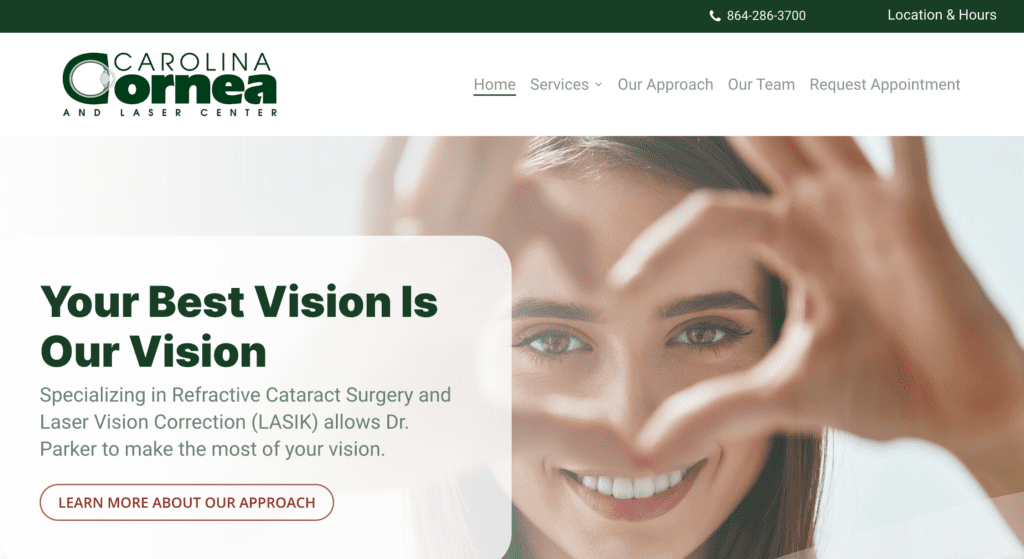It probably comes as no surprise to you that the internet never turns off. People are on the web 24 hours a day, 7 days a week, 365 days a year.
Consequently, your website is the hardest working salesperson you have. And it should complement the work of your traditional sales team, not work in isolation from it or, in the worst-case scenario, against it. Unfortunately, that’s something we see again and again — companies that provide incredible services and great products, but that have websites that drive prospects away instead of reeling them in and turning them into customers.
In an attempt to combat this trend, we’ve outlined how to increase sales by allowing your website to act as an asset for your sales team.
1. Clearly explain what your business does
You’d be surprised at the number of business websites that don’t clearly and concisely explain what the business does. You only have a few seconds to capture a user’s attention; while you care deeply about your mission, your upcoming events, and your portfolio of amazing projects, it will mean little to the user if they don’t know who you are or what you do.
Carolina Cornea’s website clearly shows exactly what the organization does.
With well-written, professional copy, you can outline exactly what your business does and how you achieve your goals. When you hone in on the core competency of your company, it becomes easier to identify the primary action you want users to take, which should help you choose the calls-to-action (CTA’s) you prioritize.
Studies have increasingly shown that buyers perform online research before making a purchase, so it’s imperative that you clearly explain what your company does and help guide users to the actions you want them to take.
2. Outline your services
Buyers have more resources at their fingertips than ever before, and they’re doing their research before they ever pick up the phone or send an email.
That’s why it’s so important to outline your services in detail. If it’s clear what services you provide, or what products you sell, it helps filter out unqualified leads who don’t need what you offer.
That means less time spent on unqualified prospects and more time spent on the people likely to buy.
3. Answer FAQ’s

Having well-thought-out and well-articulated frequently asked questions (FAQ’s) helps prospects qualify themselves even further. As an added bonus, answering these questions on your website can speed up the buying process and save your sales team time.
FAQ’s should be composed of the questions your sales team receives most often and should walk your potential clients through how your products or services work. They should also illustrate what it’s like to work with you and potentially even explain what a typical sales process looks like. What happens if the client is dissatisfied or their item is flawed? What are your payment terms and what type of support do you offer? Both of these are excellent examples of FAQ’s.
FAQ’s should ultimately make the decision to work with you an easy one.
4. Bring the leads to you
Your sales team is spending valuable time cold calling and emailing potential leads, many of which will be dead ends. But what if quality leads came to you instead? And what if it was easier to tell how likely those leads are to buy? If you’re trying to find out how to increase sales, these questions have likely occurred to you.
This is where inbound marketing comes in. Do you have articles, videos, an eBook, or other pieces of content that leads would find valuable? If so, you can put this content behind a lead-capture form instead of just placing a PDF download link on your site and giving it away for free.
Ask for the user’s contact information (typically name and email or phone) in return for your valuable content. Your sales team can then follow up, and a cold lead instantly becomes a warm or even hot lead — depending on the value and depth of the content — and all you did was let your website work its magic.
5. Allow your company culture to shine

Company culture is highly valued nowadays, so much so that it can be the determining factor when a prospect chooses who to work with.
Use your website to show off your company’s personality and values. It could be through unique headshots, team bios that contain interesting facts or favorite foods, or a video showing how your team interacts day-to-day. If you have a mission statement and/or core values, include those on the about page so visitors can see that you’ve thought these through and made them a priority.
6. The beauty of social proof
Social proof, such as testimonials, case studies, and online reviews, can be an immense boost for your brand and company. Such examples of your work further validate your business and allow prospects to see the experiences others have had. Case studies are a great way to show how you identified different pain points and helped clients address and solve them in tangible ways.
Testimonials are a great way to demonstrate what sets you apart from the competition
As customers and leads do more and more research before they reach out to you. They are checking your credibility through reviews that can make or break their decision.
Including testimonials on your website is a great way to highlight happy customers, and having great testimonials written on third-party review sites like Google, Yelp, or Angi (formerly Angie’s List), will allow you to reach potential customers before they even make it to your site.
Work Smarter, Not Harder
Tracking things such as inbound leads and contact form submissions can help you identify if the approach you’re taking is working. If not, tweak, adjust, and try again. International Best Selling Author Todd Duncan said it best when he said, “A customer buys you first and then your product.”
With this list in hand, you can ensure that your website is an impactful part of your sales process. If your website is lacking in the areas mentioned above, it could be time for a redesign.
Start the Conversation
Interested in learning more about how to increase sales by properly leveraging your website?





